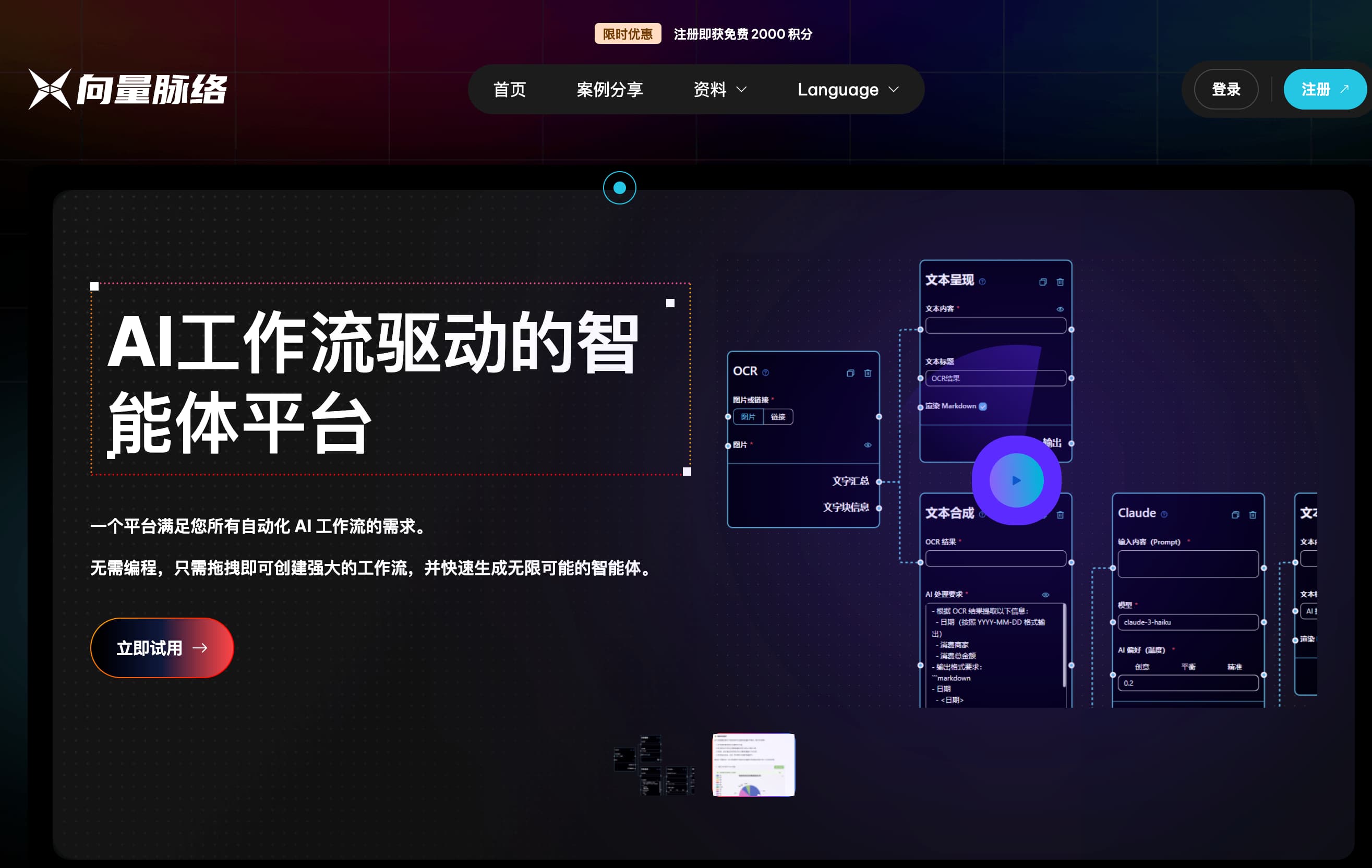

Vector Context
Overview :
Vector Context is an AI-driven workflow platform that allows users to create powerful workflows without coding, simply by dragging and dropping. It offers a diverse array of workflow nodes, from generative AI models to multimodal processing, from vector databases to web crawling. The platform supports graphical design, enabling users to quickly generate endless possibilities of intelligent agents, enhance productivity, and achieve automation.
Target Users :
Vector Context is ideal for businesses and teams seeking to enhance productivity, particularly those with repetitive workflows that wish to leverage AI capabilities for automation. Whether for large corporations or small teams, this platform can significantly boost work efficiency.
Use Cases
Conversational querying of enterprise databases for quick data analysis.
Integrating corporate knowledge bases into AI workflows for intelligent customer service.
Rapidly extracting structured information from resume files using AI and providing initial evaluations.
Automatically summarizing meeting recordings into mind maps to enhance meeting productivity.
Inputting blog article requirements to generate fully illustrated blog content with a single click.
Features
Agent Chat: Equip agents with multiple workflows, enabling AI to assess and execute workflows during conversations.
Graphical Design: Create workflows rapidly through drag-and-drop of workflow nodes and logical connections, without coding.
Workflow Sharing: Manage workflows using keys and share them with friends for them to experience your workflows.
Content Creation: Automatically generate copy for various scenarios, including e-commerce management, social media, and blog writing.
Programming Assistance: Utilize AI capabilities to assist in programming, boosting development efficiency.
Educational Aid: Leverage AI for information gathering and database management, supporting the educational process.
How to Use
1. Register and log into the Vector Context platform.
2. Choose to create a new workflow or use an existing template.
3. Add the required workflow nodes via drag-and-drop.
4. Set up logical connections between nodes to define the workflow execution process.
5. If needed, add custom programming nodes to extend functionality.
6. Test the workflow to ensure it operates as expected.
7. Run the workflow, observe the results, and make necessary adjustments.
8. Manage and share workflows using keys, or let AI call them automatically in chats.
Featured AI Tools

Pseudoeditor
PseudoEditor is a free online pseudocode editor. It features syntax highlighting and auto-completion, making it easier for you to write pseudocode. You can also use our pseudocode compiler feature to test your code. No download is required, start using it immediately.
Development & Tools
3.8M

Coze
Coze is a next-generation AI chatbot building platform that enables the rapid creation, debugging, and optimization of AI chatbot applications. Users can quickly build bots without writing code and deploy them across multiple platforms. Coze also offers a rich set of plugins that can extend the capabilities of bots, allowing them to interact with data, turn ideas into bot skills, equip bots with long-term memory, and enable bots to initiate conversations.
Development & Tools
3.8M

















